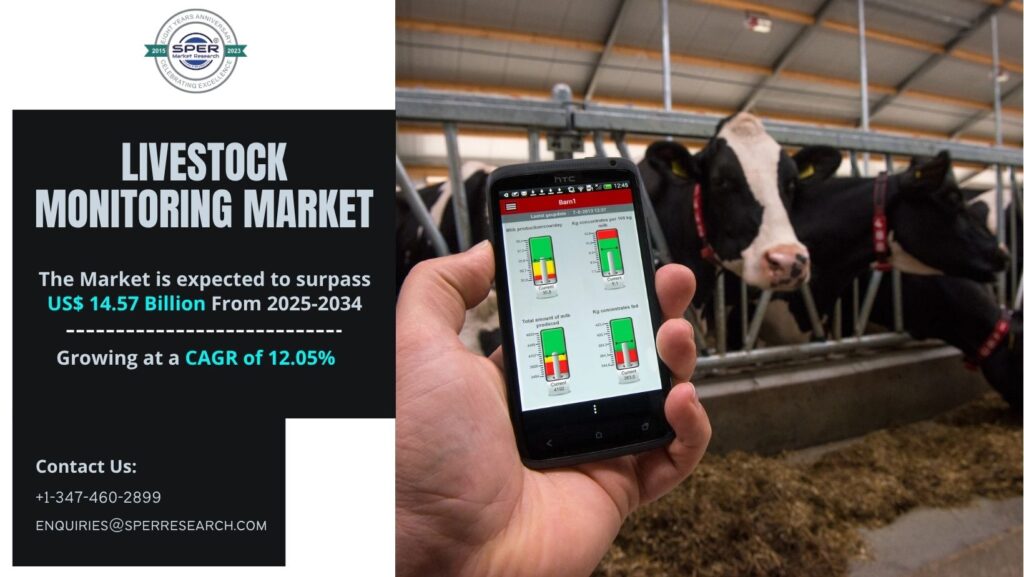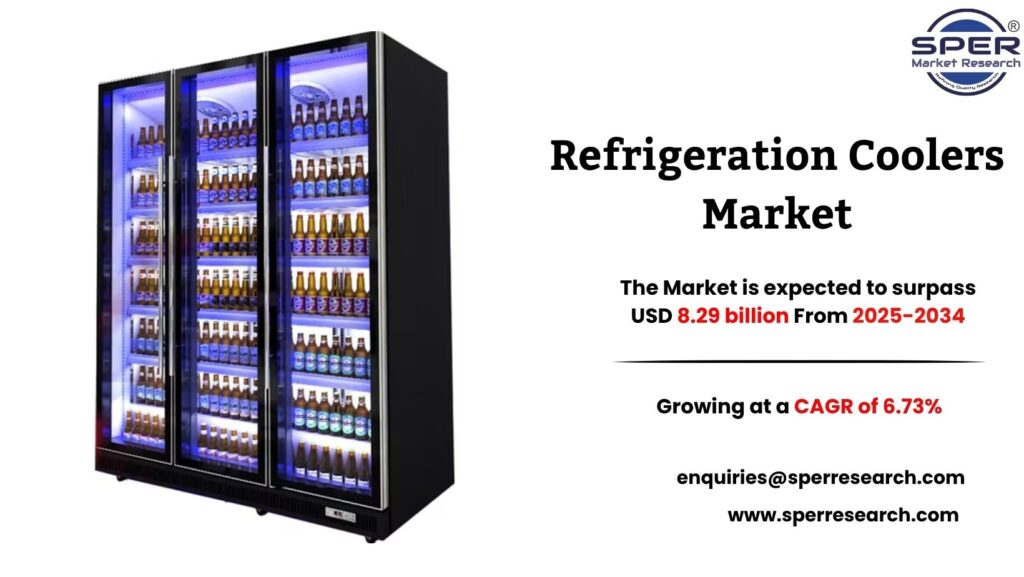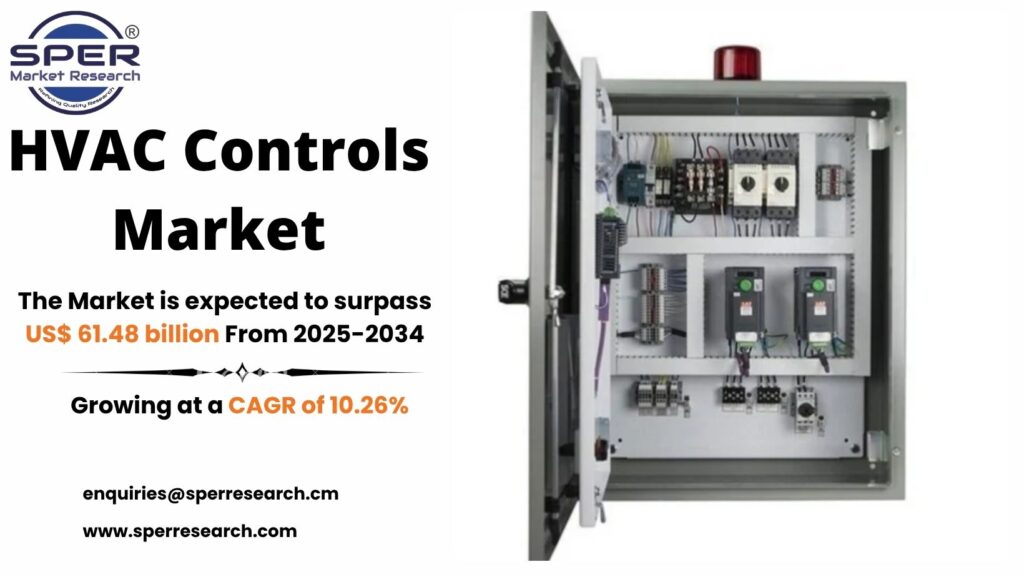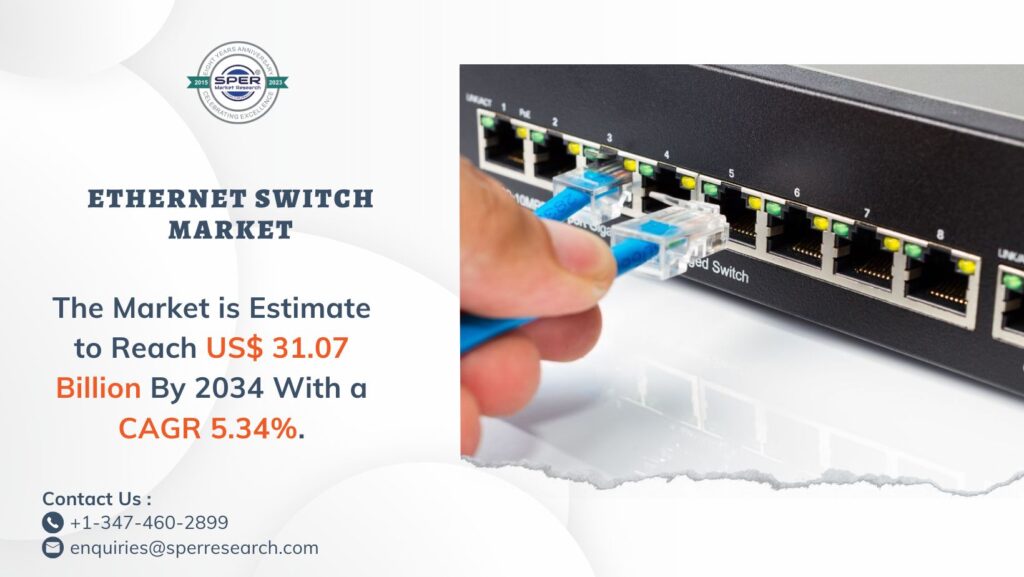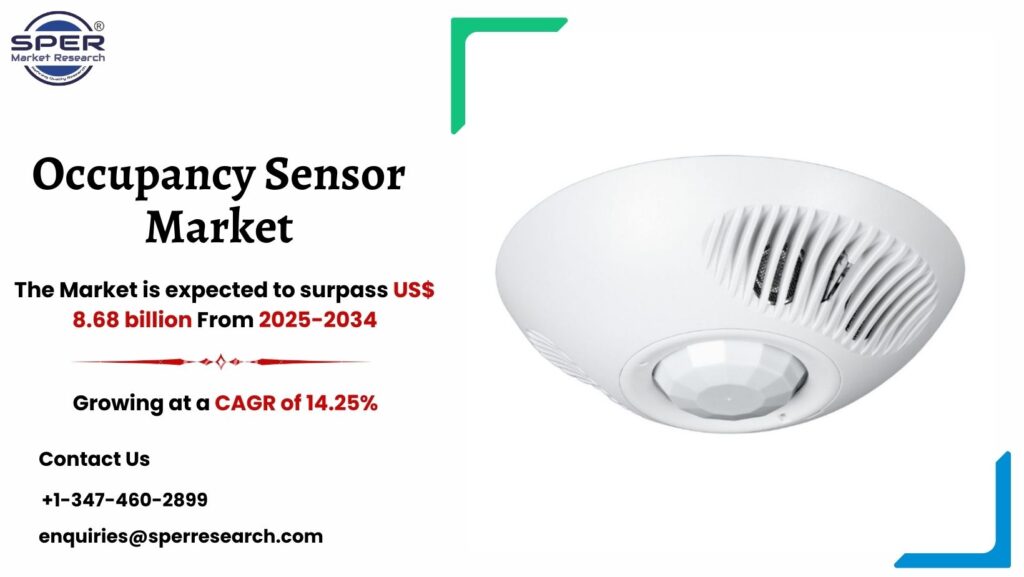Livestock monitoring constitutes a segment of a livestock management system that empowers farmers to track animal activities on their properties. It is principally utilized for upholding the health and productivity of poultry, swine, cattle, and equines. Livestock monitoring encompasses a variety of applications related to milk harvesting, feeding, heat stress management, breeding, animal comfort, and behavioral regulation, among others. The monitoring systems also support farmers in assessing the vitality of livestock in real time, analyzing disease outbreaks, tracking grazing animals, and refining breeding practices.
According to SPER market research, ‘Global Livestock Monitoring Market Size- By Animal, By Solution, By Application, By Sector – Regional Outlook, Competitive Strategies and Segment Forecast to 2034’ state that the Global Livestock Monitoring Market is predicted to reach 14.57 billion by 2034 with a CAGR of 12.05%.
Drivers:
The continuous emphasis on managing animal health, enhancing productivity, and ensuring security and traceability is a vital element that propels the acceptance of livestock monitoring solutions. Likewise, considerable expenditures in smart farming—particularly in Internet of Things (IoT)-based technologies and data-focused agriculture—will generate opportunities for immediate livestock tracking, disease prevention, and improved breeding management. Furthermore, the strict enforcement of regulations by overseeing bodies aimed at assuring food safety, controlling diseases, and promoting animal welfare will promote the integration of sophisticated livestock monitoring solutions in the years ahead.
Download the Detailed Analysis in PDF format, Here
Restraints:
Livestock monitoring systems gather extensive quantities of sensitive data regarding animals and farm activities. Concerns about potential data security breaches or unauthorized access to this information weigh heavily on farmers. With limited technical knowledge, they might find it challenging to operate and interpret the data produced by these systems. Moreover, livestock farms, particularly those situated in secluded regions, may face inadequate or unstable internet connectivity. This situation can impede the effectiveness of cloud-based livestock monitoring systems that depend on real-time data transmission. The integration of various livestock monitoring systems from multiple providers into a unified platform can be complex and financially burdensome, thus posing numerous obstacles within the market.
In 2024, North America led the global livestock monitoring market, holding the largest revenue share, primarily due to the heightened demand for technology to monitor sick animals in response to the prevalence of zoonotic diseases. This situation underscores the necessity to mitigate foodborne and zoonotic illnesses associated with livestock. Additionally, the market is experiencing growth due to ongoing improvements in sensor technology. Some of the key market players are Afimilk Ltd, DeLaval, BouMatic, Merck & Co., Inc. (Allflex), Zoetis, Lely, and others.
For More Information, refer to below link: –
Livestock Monitoring Market Growth
Related Reports:
Servo Motors and Drives Market Size
Car Power Seat Switches Market Growth
Follow Us –
LinkedIn | Instagram | Facebook | Twitter
Contact Us:
Sara Lopes, Business Consultant — USA
SPER Market Research
enquiries@sperresearch.com
+1–347–460–2899
